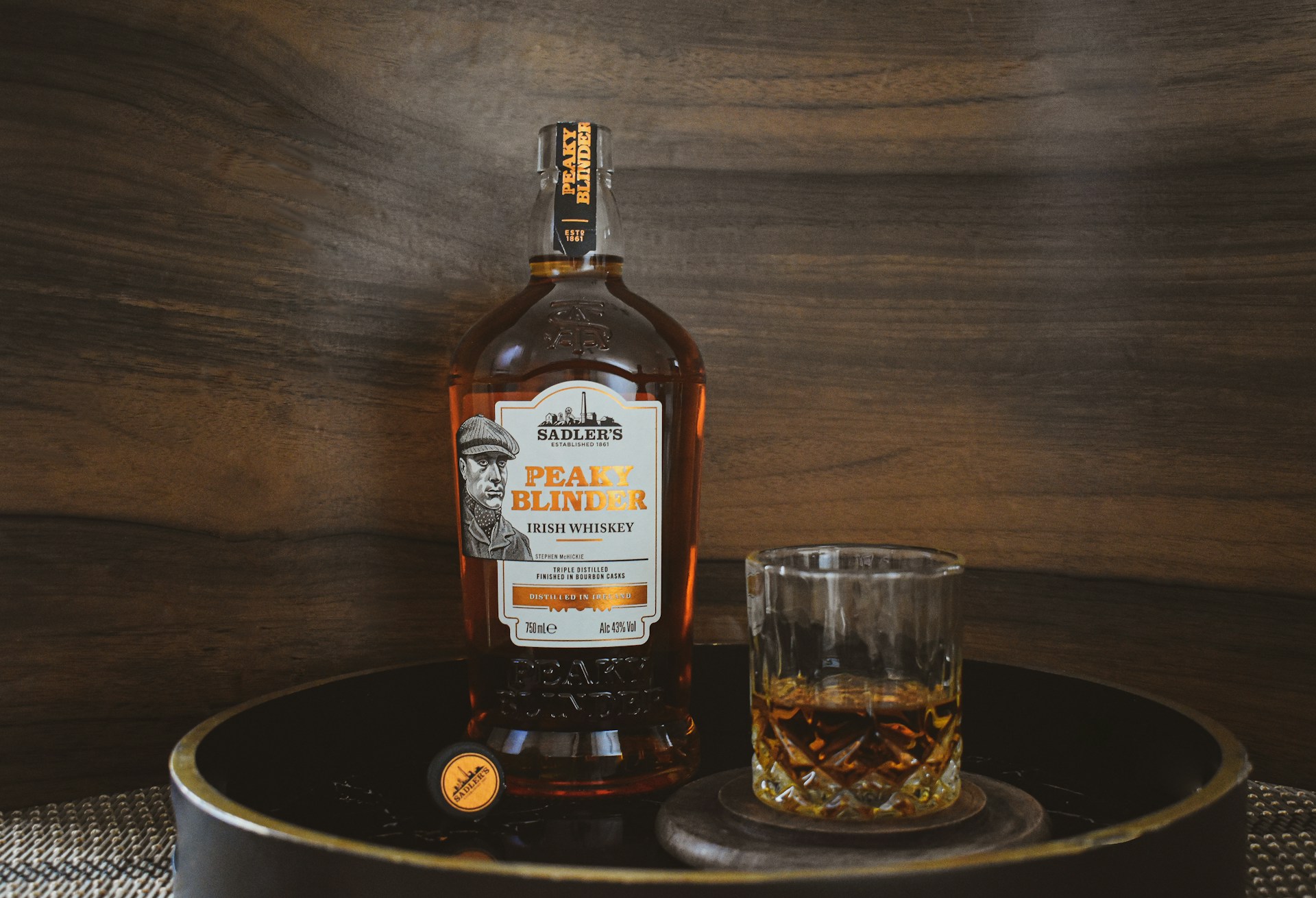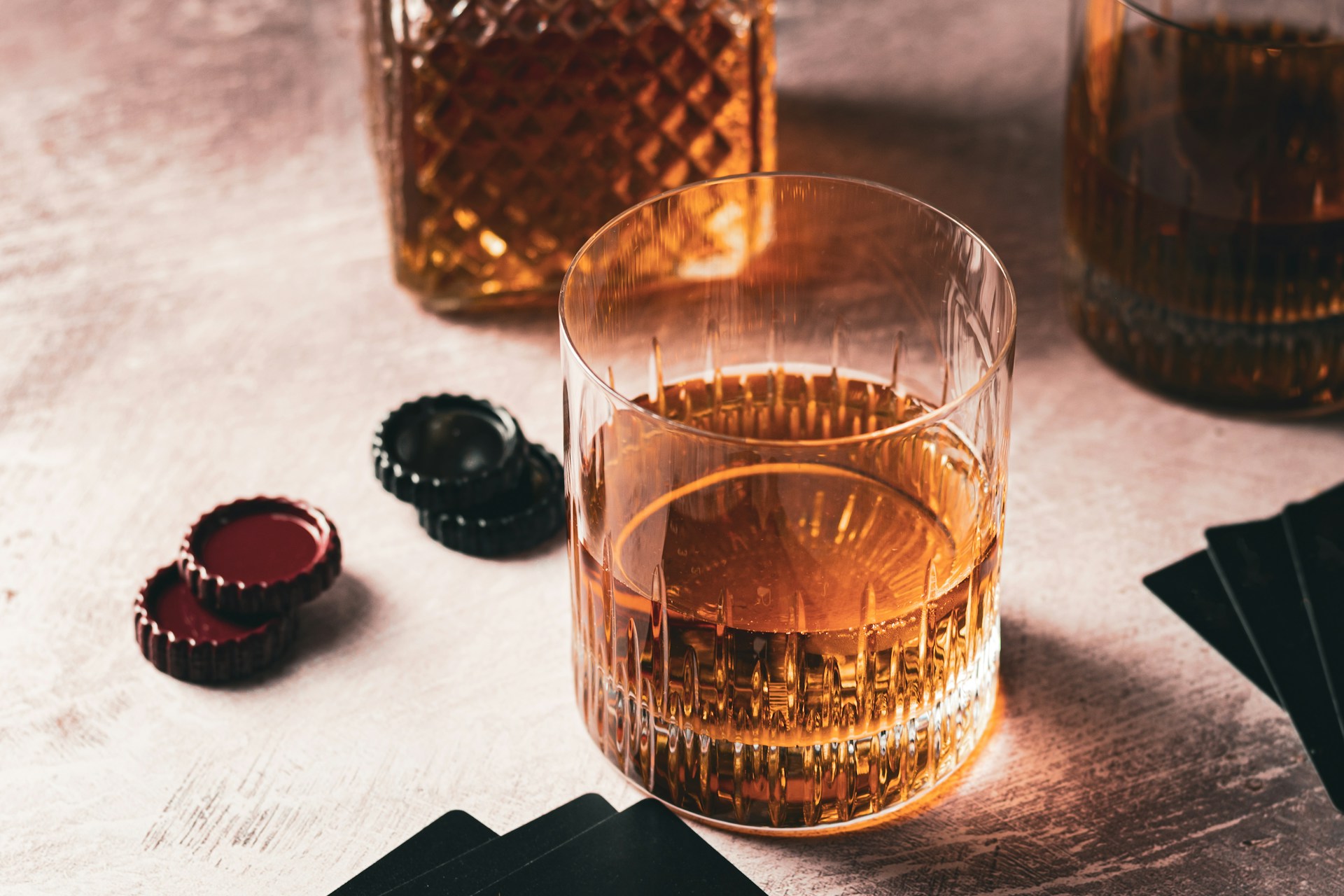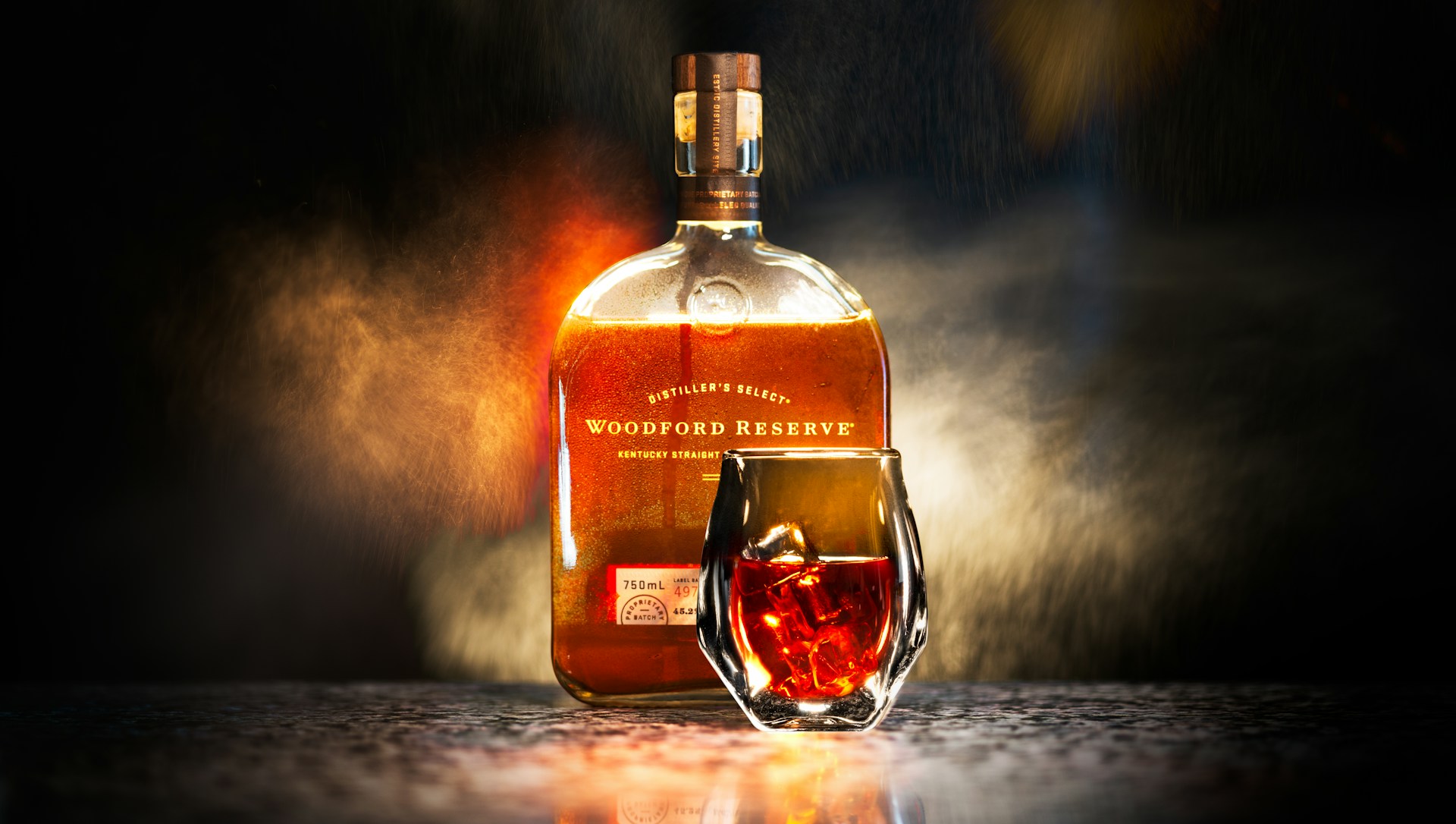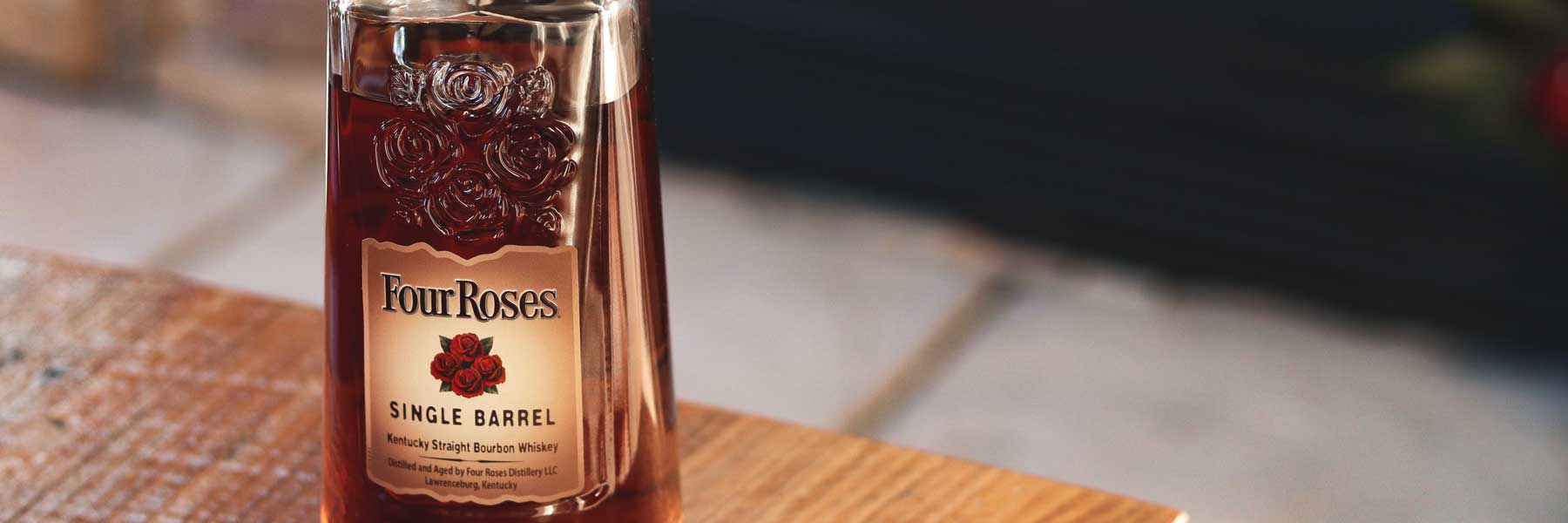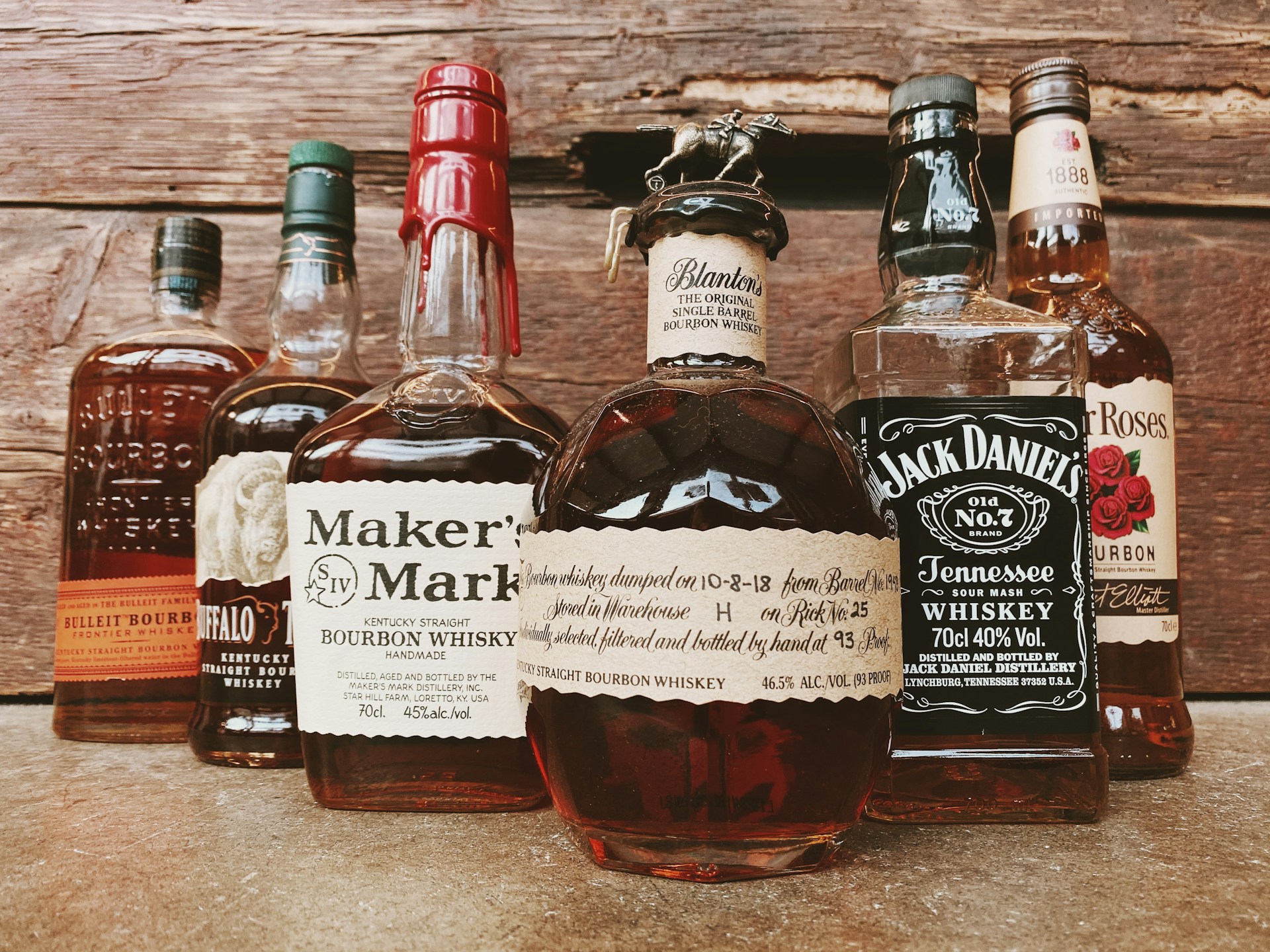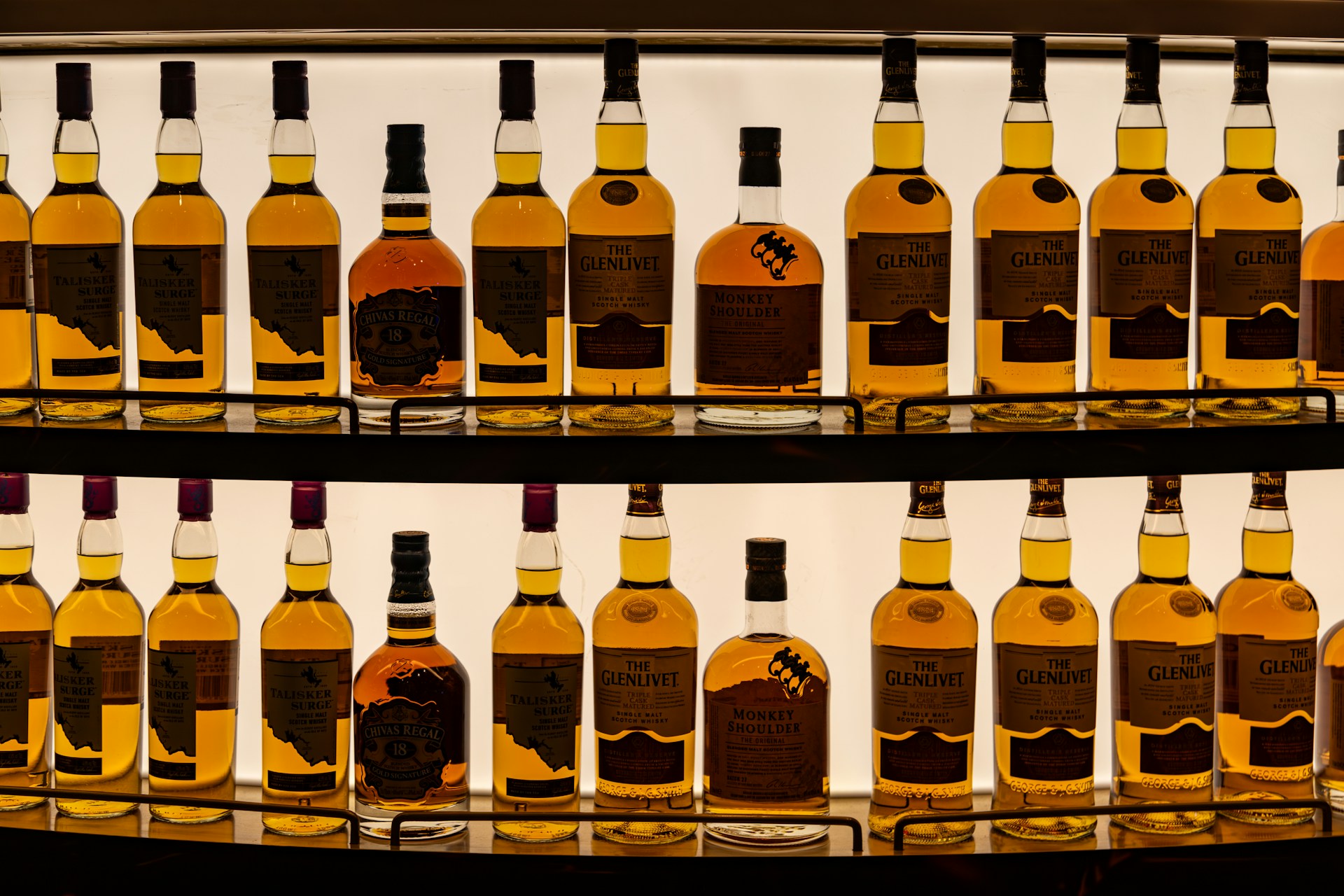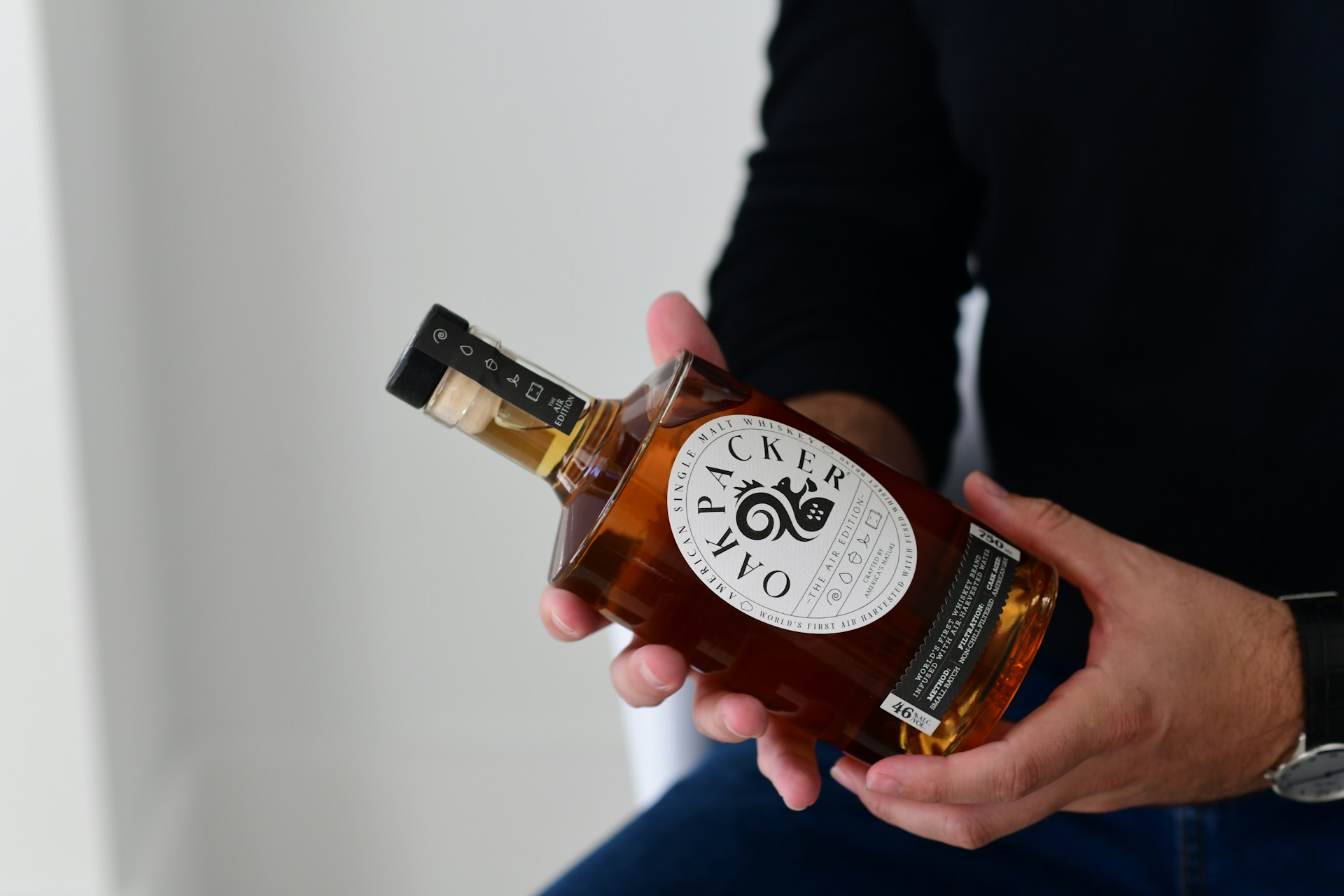Types of Whiskey Explained
Last updated on November 12th, 2024
If you’re new to the world of whiskey, the sheer variety can be overwhelming. Walk into any well-stocked bar or liquor store, and you’ll find yourself faced with a wide array of bottles, each promising a unique experience. From smoky Scotches to smooth Bourbons, spicy Ryes to mellow Irish whiskeys, the options seem endless.
But don’t feel overwhelmed. This guide will help you identify the main types of whiskey you’re likely to encounter and what their main characteristics are.
Types of Scotch Whisky
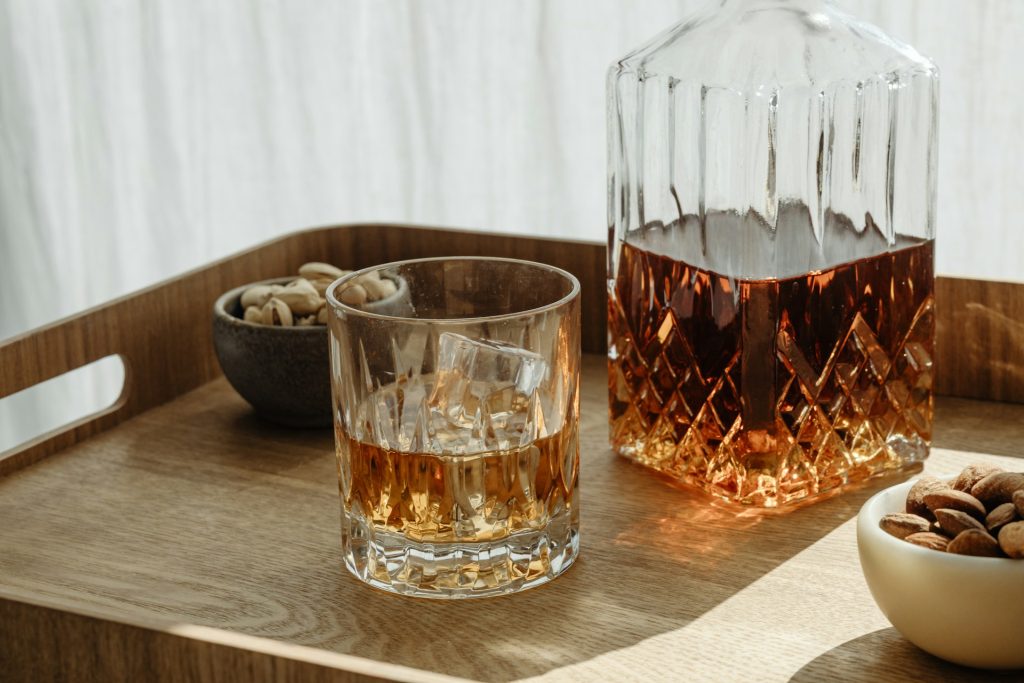
Scottish whisky, often simply called Scotch, is perhaps the most renowned of all whiskies. It’s been produced in Scotland for centuries and is protected by strict regulations to maintain its quality and character.
There are several types of Scotch, each with its own distinct profile, however the most common are single malt and blended Scotch.
Single Malt
This is one of the most well-known types of Scotch. Single malts are made at a single distillery from 100% malted barley, water and yeast using traditional pot stills. Regions such as Islay are known for their use of peat to kiln-dry their barley, imparting pungent smoky, peaty flavours. Contrastingly, Speyside and Lowland whiskies often have a lighter, fruitier profile.
Blended Scotch
The other most common type of Scotch, blended whisky combines both malt and grain whiskies from multiple distilleries. World-famous big brands like Johnnie Walker and Chivas Regal fall into this category. Blends are typically smoother and more approachable than single malts due to the variety of whiskies that have carefully mixed, making them a popular choice for beginners.
Blended Malt
Formerly known as “vatted malt,” blended malt is a blend of single malt whiskies from different distilleries. Unlike the more widely known variety of blended Scotch, this subcategory is made with single malts only (made from 100% malted barley). Blended malts omit the use of any grain whiskies which are made with alternative cereals such as wheat, millet or maize. A prime example of blended malt whisky would be Monkey Shoulder which blends just 3 malts.
Single Grain
Made at a single distillery using any cereal grain, distilled using column stills. Single grain Scotch is less common than other subtypes, however this emerging category is gaining popularity. It’s often lighter and sweeter than single malt.
Blended Grain
A less common subtype of Scotch, blended grain whisky is made with grain whiskies from multiple Scottish distilleries – excluding any single malts. These must be column distilled in Scotland from a cereal grain (or mixture) including rye, wheat, maize, oats, millet or unmalted barley.
Key characteristics of Scotch
- Distilled, aged and bottled in Scotland
- Single malts are pot distilled (usually just twice)
- Grain whiskies (used in blends) are typically column distilled
- Peated whiskies use peat, kiln-dried malted barley with strong smoky flavours
- Aged for 3 years minimum
- 40% ABV minimum (80 proof)
Types of Irish Whiskey
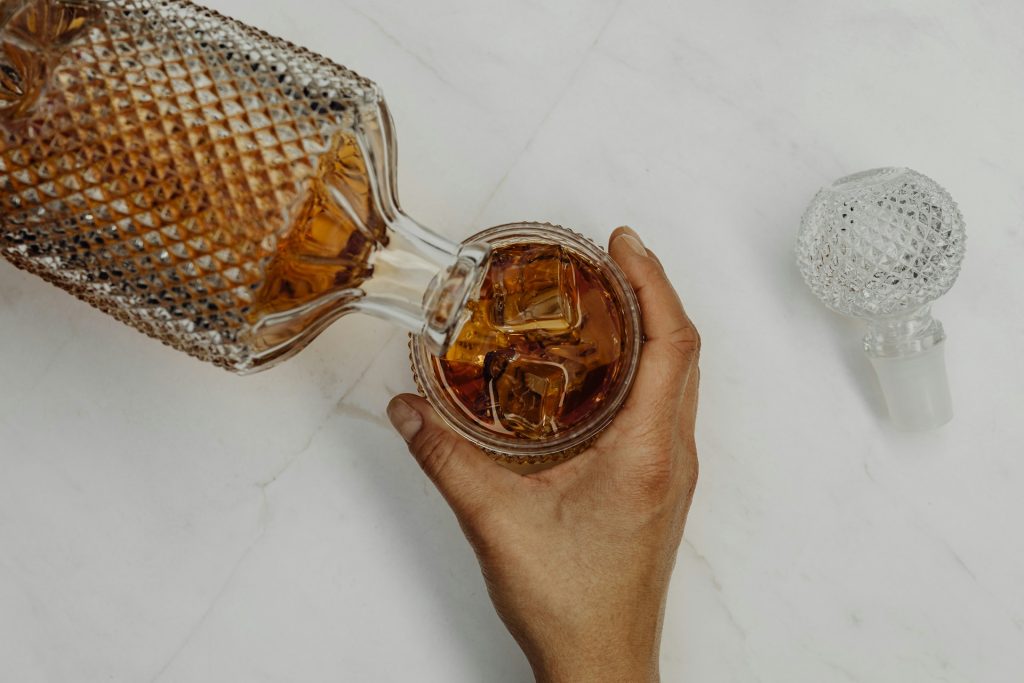
Irish whiskey has a rich history and a character all its own. Known for its smooth, approachable nature, let’s explore the main types you’re likely to encounter:
Blended
The most common type of Irish whiskey, blends combine single malt and grain whiskeys from various distilleries. They’re known for their smooth, easy-drinking nature, making them great for newcomers to the whiskey world. Jameson, the world’s best-selling Irish whiskey, is a blend.
Single Malt
Similar to Scotch single malt, Irish single malt whiskey is made from 100% malted barley at a single distillery. However, Irish single malts are typically triple-distilled (as opposed to the double distillation common in Scotland), resulting in a smoother, lighter spirit. Brands like Bushmills and Connemara fall into this category.
Single Pot Still
Single pot still whiskey is unique to Ireland and is made from a mixture of malted and unmalted barley. It’s distilled in traditional copper pot stills, giving it a distinctive, often spicy character with a creamy mouthfeel. Redbreast and Green Spot are well-known examples of this style.
Single Grain
Made from corn or wheat with a small amount of malted barley, single grain Irish whiskey is lighter and sweeter than its malt counterparts. It’s often used in blends but can also be enjoyed on its own. Teeling Single Grain is a popular example.
Key characteristics of Irish whiskey
- Distilled, aged and bottled in Ireland
- Single malts & pot still whiskeys are pot distilled (often triple distilled)
- Single pot still whiskey use malted & unmalted barley
- Unmalted barley gives more spicy flavours
- Few Irish whiskeys are peated (not as common as Scotch)
- Grain whiskies (used in blends) are typically column distilled
- Aged for 3 years minimum
- 40% ABV minimum (80 proof)
Types of American Whiskey
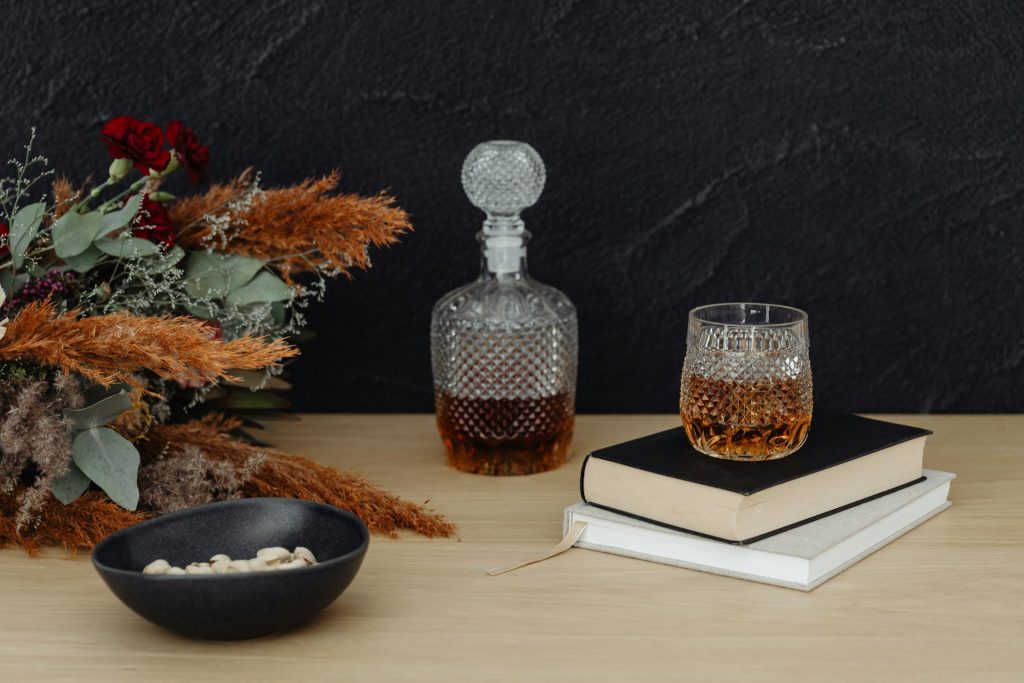
American whiskey is a diverse category with roots in both Irish and Scotch making methods. Whilst most American whiskeys use the Irish spelling (with an ‘e’), there are some brands that identify with their Scottish heritage. From the sweet notes of bourbon to the spicy kick of rye, American whiskeys are primarily distinguished by the grains used to make them using specific grain ratios known as mash bills. Let’s break down the main types.
Bourbon
Perhaps the most famous American whiskey, bourbon must be made from at least 51% corn and aged in new, charred oak barrels. It’s known for its sweetness, with flavours of vanilla, caramel, and oak. Contrary to popular belief, bourbon can be made anywhere in the U.S., not just Kentucky (though Kentucky is certainly the spiritual home of bourbon). Jim Beam, Buffalo Trace and Eagle Rare are some well-known brands.
Tennessee Whiskey
Almost identical to bourbon, this whiskey is exclusively made in Tennessee from a minimum of 51% corn, using the filtration method known as the Lincoln County Process. This is where the whiskey is gravity-filtered through sugar maple charcoal before barrel ageing, resulting in a characteristically smoother finish. Jack Daniel’s and George Dickel are both famous examples.
Rye Whiskey
Made from at least 51% rye grain, this whiskey has a spicier, more robust flavour profile than bourbon. It’s experiencing a renaissance, with both cocktail enthusiasts and sipping whiskey fans relishing its fiery kick. Look for brands like Rittenhouse, Sazerac, or WhistlePig.
Wheat Whiskey
Made with at least 51% wheat in the mash bill, these whiskeys tend to be softer and more subtle than their corn or rye-based cousins. Bernheim Original is a well-known wheat whiskey.
Corn Whiskey
Made from at least 80% corn, this whiskey isn’t legally required to be barrel aged, therefore is often clear or very pale in colour. Stemming from illicitly-made ‘moonshine’ this subcategory is less common but can offer a unique, grain-forward experience.
American Single Malt
A relatively new category, American single malt is made at a single distillery from 100% malted barley. The taste can be likened to single malt Scotch, however, American distilleries aren’t required to use pot stills and often put their own spin on it, using different barrel types or smoking techniques. Westland and Balcones are leading producers in this category.
American whiskeys are often aged for shorter periods than their Scottish or Irish counterparts, due in part to the more extreme temperature fluctuations in many parts of the U.S., which can accelerate the ageing process.
Key characteristics of American whiskey
- Distilled, aged and bottled in America
- Predominantly column distilled
- Some distilleries use pot distillation (such as Woodford Reserve)
- Named grain typically represent 51% of the mash bill
- Corn whiskey must use a minimum 80% corn in the mash bill
- Straight bourbon has a 2 year minimum ageing requirement
- Whiskey or bourbon has no minimum ageing requirement
- 40% ABV minimum (80 proof)
Types of Canadian Whisky
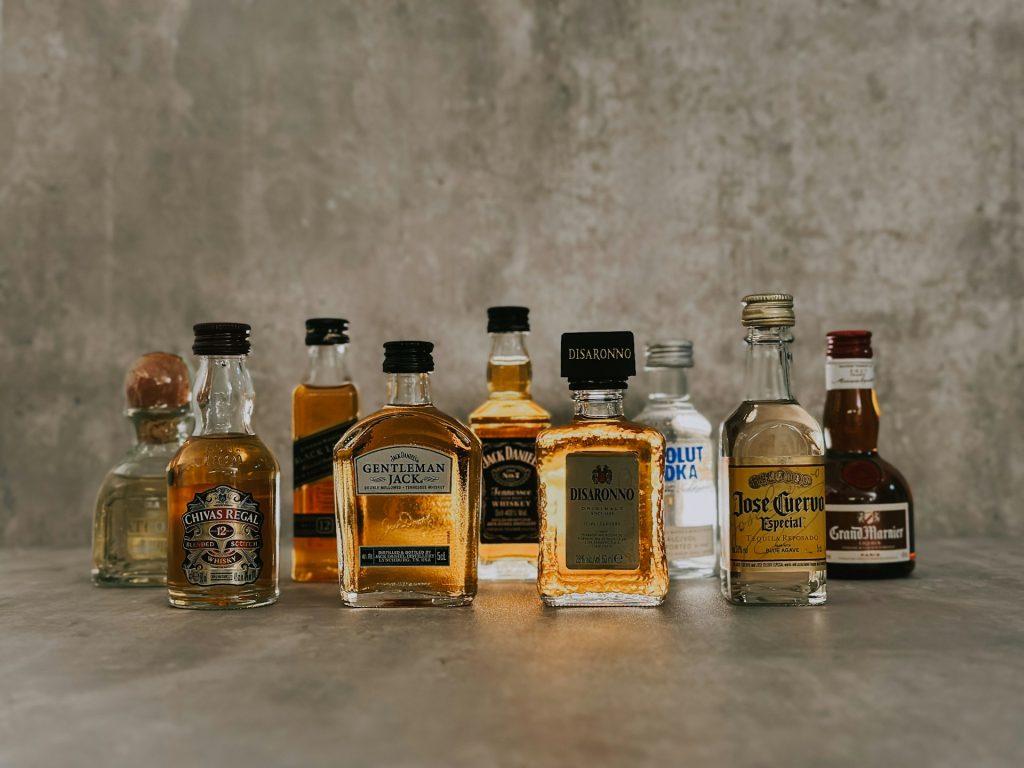
Often overlooked in conversations about world whiskies, Canadian whisky has a character and tradition all its own. Known for its smooth, easy-drinking nature, it’s been a quiet powerhouse in the global whisky market for years.
An interesting aspect of Canadian whisky is the interchangeable and often misplaced term of ‘rye whisky’. While rye is often used to make Canadian whisky, it’s rarely the predominant grain and can sometimes even be omitted from blend entirely. Yet, it is still often referred to as rye whisky.
The majority of Canadian whisky is typically a blend of different grain whiskies (from the same distillery) which are usually column distilled and aged separately before being combined. This process, known as blending to type, allows for precise control over the final flavour profile. Wheat is usually the dominant grain.
However, Canada does produce its own single malt whisky which are made in a similar fashion to single malt Scotch; from a single distillery using 100% malted barley.
Regardless of which type of Canadian whisky is being made, the spirit must also be barrel-aged for a minimum of three years and be a minimum of 40% ABV. Uniquely, it may also contain additional flavouring (which is strictly prohibited in American whiskey or Scotch).
Key characteristics of Canadian whiskey
- Distilled, aged and bottled in Canada
- Most Canadian whisky are blends, made from base spirit
- Single malts are less common
- Predominantly column distilled
- Some distilleries use pot distillation
- Aged for 3 years minimum
- 40% ABV minimum (80 proof)
Types of Japanese Whisky
Japanese whisky may be a relative newcomer on the global stage, but it’s quickly earned a reputation for excellence. Inspired by Scotch whisky-making techniques, Japanese distillers have created a style that’s both familiar and uniquely their own.
Japanese whisky began in the 1920s when Masataka Taketsuru returned from Scotland with the knowledge he’d use to establish whisky production in Japan. Today, the major players are Suntory and Nikka, though there are several smaller distilleries making waves.
The most common types of Japanese include
Single malts
Inspired by (and very similar to) Scotch, Japanese single malts are made at a single distillery from 100% malted barley, water and yeast using traditional pot stills. Distilleries such as Yamazaki, Kurayoshi and Nikka have even imported peat from Scotland to create their own smoky flavours.
Unique to Japanese whisky-making is the use of Mizurna oak casks. Unlike the broadly used European or American oak, this native Japanese timber imparts a sweeter flavour to the whisky, giving it a very light body. Mizunara mostly comes from the Hokkaido prefecture in northern Japan.
Blended
Japanese whisky which uses both pot distilled single malts and column distilled grain whisky from various distilleries within its blend.
Pure malt
Japanese whisky which uses only single malts from various distilleries within the blend, sometimes coming from Scottish and Japanese distilleries.
Grain
Column distilled Japanese whiskies made from various cereals such as malted barley, un malted barley, corn or rye.
Single grain
Grain whisky from a single Japanese whisky. These are typically column distilled. An example would be ‘The Chita’ single grain by House of Suntory.
When tasting Japanese whisky, you might encounter delicate fruity notes, gentle smokiness, or hints of incense and spice. Many are remarkably smooth and refined. Yamazaki, Hakushu, and Hibiki are some well-known brands to look out for. However, due to increasing global demand and limited production, some Japanese whiskies can be hard to find or quite expensive.
It’s worth noting that regulations around Japanese whisky have been somewhat loose, allowing some products to be labelled as Japanese whisky even if they contain imported whisky. New standards introduced in 2021 aim to provide more clarity, but it’s still worth doing your research if authenticity is important to you.
Other World Whiskies
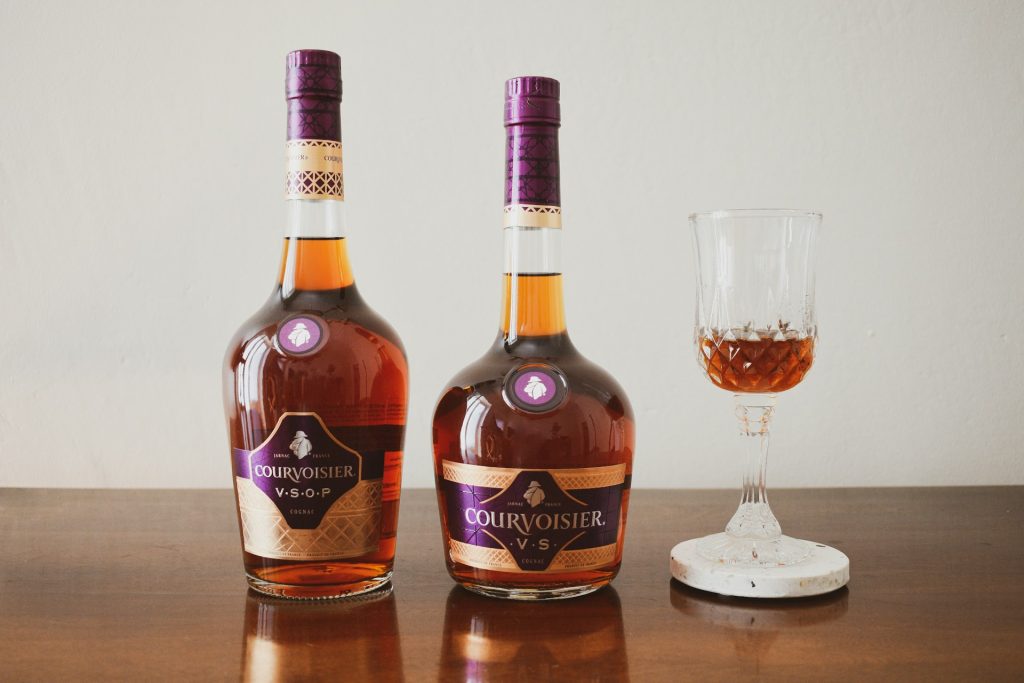
While Scotland, Ireland, America, Canada, and Japan are often considered the “big five” of whisky production, exciting things are happening in distilleries around the globe. Let’s take a quick tour of some other notable whisky-producing countries:
Indian Whisky
India is actually one of the largest whisky consumers in the world. While much of it is molasses-based (which wouldn’t qualify as whisky in many countries), there are some excellent grain-based whiskies emerging. Amrut and Paul John are two brands offering whiskies that often show tropical fruit notes due to India’s warm climate which accelerates the ageing process.
Taiwanese Whisky
Kavalan, founded in 2005, has put Taiwan on the whisky map. Their whiskies are known for maturing quickly in the subtropical climate, resulting in complex flavours in a relatively short time. Expect notes of tropical fruits, honey, and spice.
Australian Whisky
Australian distillers are crafting some truly unique whiskies. Tasmania, in particular, has become a hotspot for whisky production. Brands like Sullivan’s Cove and Lark are producing award-winning single malts that often feature distinctive local ingredients.
English Whisky
After a century-long hiatus, whisky production has returned to England. Distilleries like The English Whisky Co. and Cotswolds are producing both traditional and innovative styles, adding their voices to the global whisky conversation.
Swedish Whisky
Mackmyra, Sweden’s first whisky distillery, opened in 1999. Swedish whisky often showcases local ingredients, like Swedish oak for ageing or juniper smoke for peated expressions.
French Whisky
Yes, even the land of wine and cognac is producing whisky! French whiskies often use local ingredients and wine casks for maturation, creating unique flavour profiles.
These “world whiskies” are pushing boundaries and challenging traditional notions of what whisky can be. They’re worth seeking out for anyone looking to expand their whisky horizons. Each brings something unique to the table, whether it’s local ingredients, innovative techniques, or the influence of different climates on the aging process.
As the whisky world continues to expand, keep an eye out for new and exciting expressions from unexpected places. You never know where the next whisky revelation might come from!
How to Choose and Enjoy Different Types of Whiskey
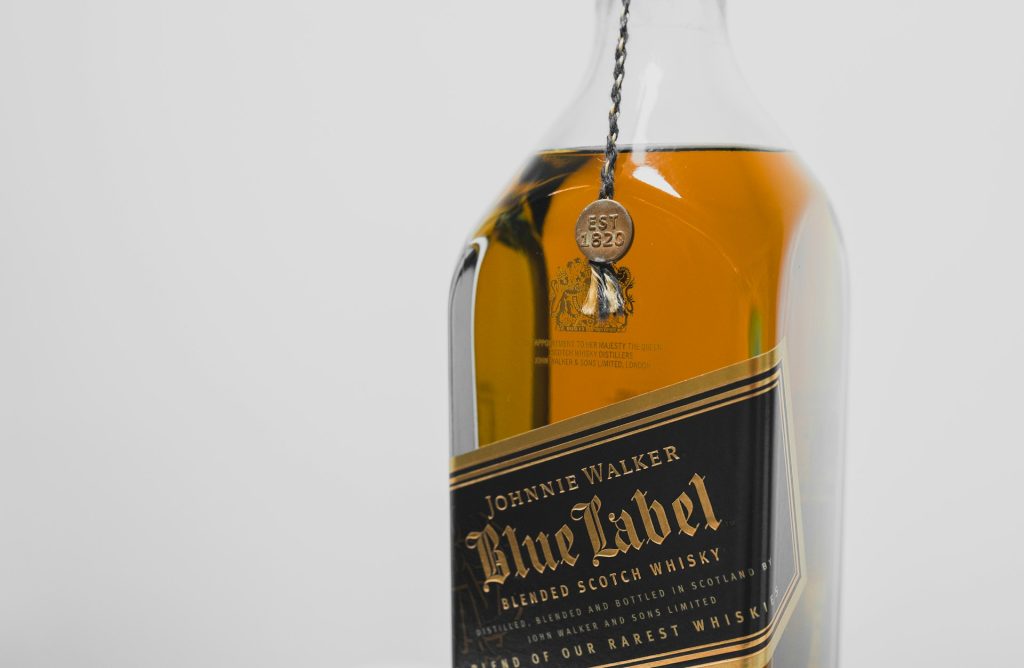
With so many options out there, choosing a whiskey can seem daunting. But don’t worry – half the fun is in the exploration. Here are some tips to help you navigate the world of whiskey:
- Start with your palate: Think about flavours you enjoy. If you like sweet drinks, bourbon might be a good starting point. If you prefer spicy foods, give rye a try. For those who enjoy smoky flavours, a peated Scotch could be right up your alley.
- Consider the occasion: Are you looking for a sipping whiskey for quiet contemplation or something to mix in cocktails? Blended whiskies often work well in mixed drinks, while single malts are typically enjoyed neat or with a splash of water.
- Don’t be afraid to ask: Whether you’re at a bar or a liquor store, don’t hesitate to ask for recommendations. Describe what you like (or don’t like), and let the experts guide you.
- Experiment with different serving styles: Try your whiskey neat, with a few drops of water, or over ice to see what you prefer. Each method can bring out different aspects of the whiskey’s flavour.
- Use the right glass: A tulip-shaped glass, like a Glencairn, can enhance your nosing and tasting experience by concentrating the aromas.
- Take your time: Whiskey is meant to be savoured. Take small sips, let it coat your palate, and pay attention to the flavours as they evolve.
- Keep notes: Jot down your impressions of different whiskies. This can help you identify what you like and don’t like over time.
- Try a flight: Many bars offer whiskey flights – a selection of small pours of different whiskies. This is a great way to compare and contrast different styles.
- Don’t get hung up on age or price: While these can be indicators of quality, they don’t guarantee you’ll enjoy the whiskey. There are plenty of excellent, affordable options out there.
FAQs
1. What’s the difference between single malt and blended whisky?
Single malt is made from 100% malted barley at a single distillery, while blended whisky combines whisky from multiple distilleries and can include both malt and grain whiskies. Single malts are often more complex, while blends are typically smoother and more consistent.
2. Why are some whiskies spelled with an ‘e’ and others without?
The spelling often indicates the whisky’s origin. “Whisky” is typically used for Scotch, Canadian, and Japanese spirits, while “whiskey” is common for Irish and American varieties. However, there are exceptions, and some brands choose their spelling based on tradition or preference.
3. What makes bourbon different from other whiskeys?
Bourbon must be made in the United States from at least 51% corn and aged in new, charred oak barrels. This gives bourbon its characteristic sweetness and vanilla notes. It also can’t have any added flavours or colors.
4. Is older whiskey always better?
Not necessarily. While age can contribute to complexity, younger whiskies can be excellent too. The key is balance and quality of production. Over-aging can sometimes lead to an overpowering wood flavour. It’s best to try different ages and find what you prefer.
5. How should I store my whiskey?
Store your whiskey upright in a cool, dark place away from direct sunlight. Unlike wine, whiskey doesn’t continue to age in the bottle, so you don’t need to worry about storing it on its side. Once opened, a bottle can last for years if properly sealed, though oxidation may gradually affect the flavour over time.
However, if you regularly drink whisky (or whiskey) you may also consider using a decanter for a more visually appealing aesthetic.
Summary
- Whiskey comes in various styles, each with unique characteristics based on ingredients, production methods, and origin.
- Major types include Scotch, Irish, American (Bourbon, Rye), Canadian, and Japanese whiskies, each with distinct flavour profiles.
- Emerging whisky producers from countries like India, Taiwan, and Australia are adding diversity to the global whisky scene.
- The way you enjoy whiskey (neat, with water, or in cocktails) can significantly impact your tasting experience.
- When choosing a whiskey, consider your flavour preferences, the occasion, and don’t hesitate to experiment with different styles.


